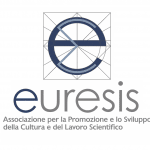Explorers
Researching the unknown is one of the deepest aspects of human nature. Since pre history, the humans progressively widened the limits of their habitats, often running big risks, looking for unexplored territories. The ancient mariners sailed the ocean trying to find new lands and unknown seas. Also when immediate advantages were not present, the need for exploring the world was always alive, boosted by a secret attraction for reality. Our innate need for novelty represents a continuous prompt to “go beyond”, to be open to meet the unexpected, the unknown, the “other” (be it another person, another continent, another planet). All the explorers have the intuition that the reality they are trying to explain, no matter if it is still unknown, will somehow have a meaning for us, will tell us something about our presence in the world, our origins, our destiny. The ancestral need of the man for meeting the mystery, expressed in the art and literature of all the cultures, did not only bring to a great expansion of our knowledge of the world, but to a deeper awareness of ourselves as well.
Nowadays, science is a unique form of exploration, that allows us to expand our knowledge of the physical world to limits that had never been reached before. But there is a precise branch of research that embodies, in modern terms, the same adventure of the ancient marines: space exploration. As a matter of fact, when we explore the space, we are not making experiments in a lab, we are not “passive” observes of the surrounding universe: we travel through the “cosmic ocean”, sending space ships (with astronauts or, more often, with sophisticated devices), to study the other worlds on site and to interact directly with the extraterrestrial environment.
In spite of the great risks, difficulties and losses, the planet exploration programs went on for more than 50 years without interruption. Thanks to the extraordinary technological development, the scientists widened the limits of space exploration far beyond the orbits surrounding the Earth, sending dozens of probes to the other planets and satellites of the Solar System. Some of these missions, starting from the conquer of the Moon with the Apollo Program, and other European (ESA) and American (NASA) probes sent to the solar system, had and will have a massive impact on the perception of our place in the universe. Among these, the Voyager Program stands out as an extremely important accomplishment.
Sent in 1977, after a 18-bilion-chilometer journey that lasted 36 years, Voyager 1 was the first space ship to exit the limit of our Solar System. Thanks to a rare and favorable planetary alignment, the two Voyager ships reached all the external planets, from Mars to Neptune, discovering new satellites and providing us extraordinary images of unexplored worlds. The odyssey of the Voyager shook from the basis our knowledge of the Solar System, and opened the way to many missions for the future, that will be directed on the single planets and satellites. In August 2013, Voyager 1 completed its journey through the Solar System, crossing the Heliopause and becoming the first object produced by the man to enter the interstellar space.
Each one of the Voyagers contains a “Golden Disk”, a sort of “cosmic postcard” containing information about the humans, about the cultural and scientific heritage of our planet, aimed at providing data about us, in the unlikely event extraterrestrials creatures come in touch with one of the space ships. Beyond the low possibilities that something like this may happen, these disks represent an emblematic characteristic of the experience of exploration: the perpetual need to find something or someone. We don’t explore just to find, but also to be found.
The exhibition will bring the visitors onto the Voyager, in an ideal interplanetary trip that starts from the Earth and reaches the extreme limits of the Solar System. Through historic images, reproduction of space probes, videos and multimedia material, the visitors will come in touch with the extraordinary technical challenges of these exploration, and will be involved the magnificent journeys of the recent missions. They will see the extraterrestrial landscapes, from the fascinating sights of Mars to the exotic giant planets, from the huge satellites of Jupiter to the breathtaking view of the rings of Saturn, till the landing of the Cassini probe on Titan.
At the end of this journey, we will appreciate our planet in a completely new way: we will see how tiny, wonderful and welcoming our Earth is. As a matter of fact, the farthest edges are an extremely favorable point of view to observe reality, because from far away we can understand the place we come from. As T.S. wrote: “We shall not cease from exploration, / and the end of all our exploring / will be to arrive where we started / and know the place for the first time”.
Cured by Euresis association.
In collaboration with Fondazione CEUR.




